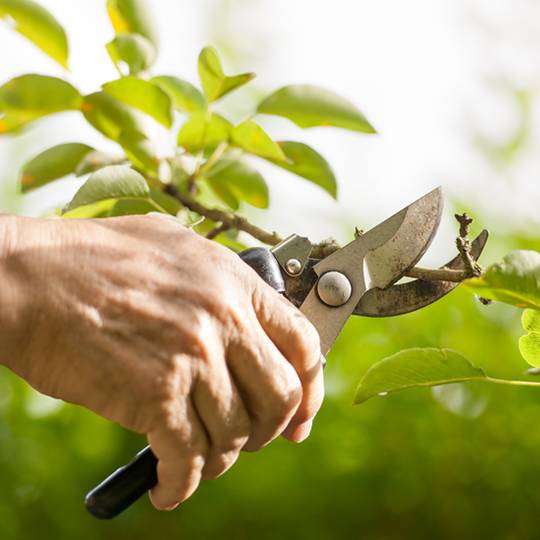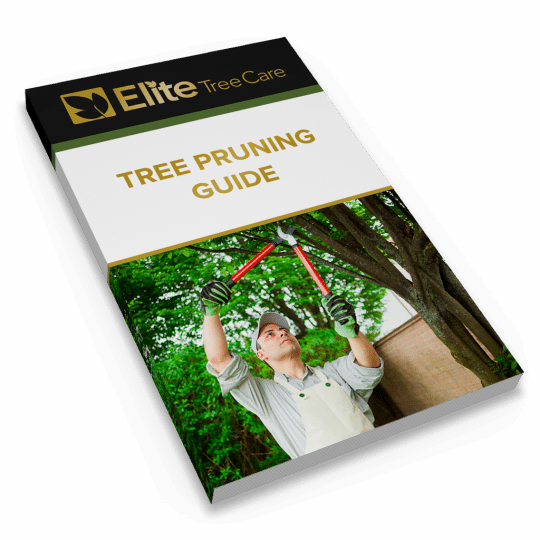How to Prune a Young Tree the Right Way
Posted
September 15, 2016

You’ve picked a tree that is perfect for that planting site in your yard, and you’ve read our guide on how to plant it. Now, the most important thing you can do is to ensure the long-term health and beauty of the thing is to prune, or train, the tree at a young age. Pruning is less damaging to the plant when it’s young. If you do it properly, you can extend the tree’s lifespan and save money on tree maintenance down the road.
How to Prune a Young Tree in its First Year
In their first year of growth, trees are no more than upright stems. Unless they are unusually vigorous, they do not grow lateral stems (and become “feathered”) until the second year of growth. In the first year, your main objective should be to strengthen and expand the tree’s root system. You can achieve this by leaving intact as much of the leaf surface as possible. Remove only damaged, pest-infested, or dead limbs. Leave the temporary lower branches on the tree until they reach one inch in diameter to maximize trunk growth and root development.
How to Prune a Young Tree in Years 2 to 3
Can you identify a strong leader? How about when it comes to young trees? A central leader is the single stem that dominates the tree and that will become the trunk. Training a strong central leader is a smart way to discourage weak branches and prevent pricey corrections later on. In the second to third years of a tree’s growth, you can begin a regular program of developmental pruning. Continue to prune out diseased or dead limbs, along with any vigorous stems that may compete with the central leader.
If you lose the leader, maybe after a storm, prune it back to the first available lateral shoot which is growing more or less upright, or if no lateral growth is available, the first healthy bud. Train this to replace the original leader. If the buds and shoots grow opposite each other, then remove the bud or shoot growing opposite the one you have chosen as the new leader.
Helpful Tips to Prune a Young Tree Correctly
- Remove weak branches early in the tree’s life so that pruning wounds are small. Early pruning also promotes strength and balance that will make a tree less susceptible to damage from wind, ice, and snow storms.
- Know the difference between light and heavy cuts (how much length is being removed from the branch) and how those will affect the shape of the tree. On a young, fast-growing branch, a light cut (less than 6 inches) to the terminal end will encourage lateral branching up and down the branch. A heavy cut, on the other hand, (anything from 6 inches to several feet), will force the buds located just below the cut to grow rapidly.
- Identify the best leader and lateral branches before you start pruning. Try to find and use lateral branches that form “10 o’clock” or “2 o’clock” angles with the trunk.
- Keep your tools sharp.
- One-hand pruning shears with curved blades work best on young trees.
- Try to maintain evenly-spaced lateral branches, 8 to 12 inches apart. Be careful not to go crazy with the pruning shears. At least two-thirds of your tree should be live crown – as in, the pretty, green, leafy part.

Choose a pair of pruning shears that works best for your hand and grip. They will be one of your most-used garden tools.
Daunted by the Task of Pruning? Call on Elite Tree Care.
The experts at Elite can help you prune your young and mature trees to enhance their health and beauty. Call Elite today at 610-935-2279 for a free consultation.

Download Your FREE Tree Pruning Guide
Learn how, when, and how much to trim or prune your trees to maximize their health and beauty. This guide covers the factors that go into tree trimming (pruning) and will help you make a more informed decision about hiring a professional tree service.